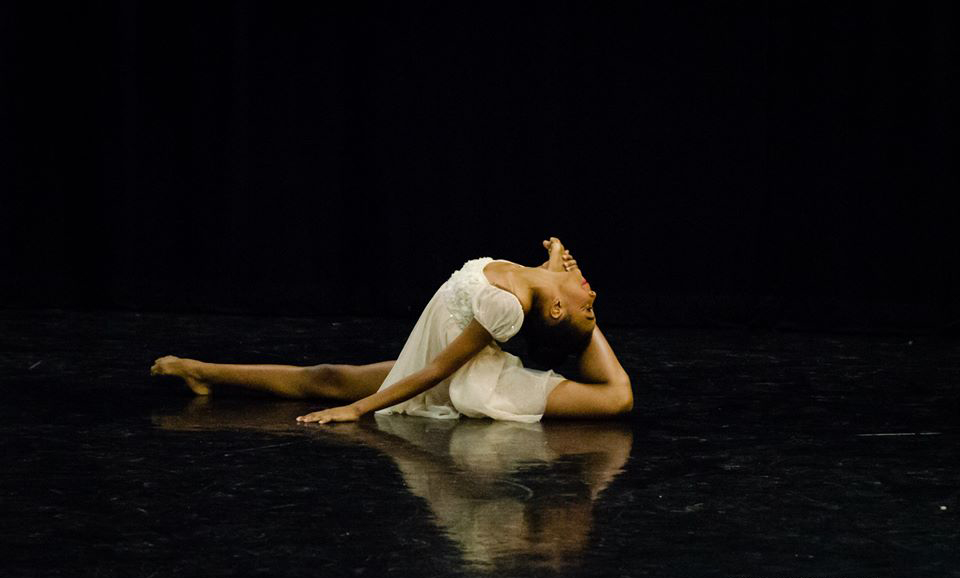I was twelve years old when I experienced my first anxiety attack. There I was, alone backstage two hours prior to the biggest performance of my career. My heart was fluttering, my chest felt tight and my hands were shaking. Soon, this tightness in my chest evolved into shortness of breath which transitioned into a full-fledged anxiety attack. I was experiencing performance anxiety – So how did I get to this point?
As a pre-professional dancer, I was constantly told that anything less than perfection would not do. One mistake can end your career, and if each step is not done with the correct technique, rhythm, timing and precision, the entire performance will be ruined. At 12 years old, I was thousands of kilometers away from my family, training in Los Angeles with the Joffrey Ballet School and about to perform in the largest venue of my life. I was one of few Canadians who were selected to train and perform with one of the most prestigious dance programs in America.
“Not only are agents and talent scouts are out there, but the artistic director of this program is as well. Performing well tonight can lead to you becoming a full time Joffrey dancer”, as I heard these words come out of my choreographer’s mouth I began to have a crisis of confidence knowing that this one performance could change my life in an instant.
I excused myself from the room and went into my dressing room in an attempt to focus. But I couldn’t. As I thought of all of the things that could possibly go wrong I grew more and more concerned and doubtful of my abilities. My heart began fluttering, – heart palpitations. My chest felt tight and my hands were shaking. The thought of going out on that stage terrified me – just as much as the thought of not going out. If I had turned away, I would be turning away from a once in a lifetime opportunity. Through this knowledge and a call to my mother, I was able to calm down. The tightness in my chest and shortness of breath subsided, however, the trembling that the fear caused still remained.
This trembling made me feel off balance in my performance and subsequently caused me to fall out of one of my pirouettes. At that moment, I realized that focusing on the things that could go wrong, became a self-fulfilling prophecy. My fear became my hindrance.
Anxiety is not an uncommon issue, especially in athletes, and while feeling a bit nervous can be considered normal, extreme anxiety can often be detrimental. In some cases, anxiety can cause “stage fright” which is characterized by an individual being so overwhelmed from fear of performance that they freeze and are unable to move or even speak. In severe cases, anxiety can cause an individual to actually become dizzy and faint. All of these effects are ruinous to athletic performance.
Over the past few years there has been a rapid increase in reports of anxiety in sports. This is largely due to the fact that people today feel they have much great amounts of pressure on them. This pressure is often associated with social media. People are constantly comparing themselves to others on social media not taking into account that individuals on social media will go as far as editing photos or videos to take out their mistakes. Subsequently, if the viewer is watching a video of an individual slaying 15 pirouettes not realizing that the individual who posted the video edited out the turnboard beneath their feet, the viewer may experience feelings of inadequacy when compared to their own performance, thus resulting in increased pressure to perform.
Anxiety in athletic performance can also stem from other sources of pressure including extremely harsh coaching and parenting strategies that make the athlete afraid to make a mistake. This type of pressure can cause athletes to have an additional source of fear and anxiety as they tend to fear the consequences that will come from poor performance. This now becomes a self-fulfilling prophecy where the individual performer, through their fear and anxiety, focus on the negative expectation from their parent, coach or other, then unintentionally makes those expectations a reality.
So, what can be done to decrease anxiety levels and therefore increase performance ability among athletes? Solutions to anxiety in performance can include, visualization, meditation and ensuring that the athlete is as prepared as they possibly can be. Visualization can be as simple as an athlete closing their eyes and imagining that the day runs smoothly and without stress. Through rehearsing something mentally, the body will actually be able to produce what has been visualized with a lesser amount of nervousness and anxiety.
Meditation involves the athlete completely relaxing their body and mind and solely focusing on their breath. When meditating, the athlete should be actively aware of their breathing through their nose and count their breaths. Meditation has the ability to slow heart rate and clear the mind, therefore, it can diminish the symptoms of anxiety that are related to a rapid heart rate while heightening mental performance which subsequently betters physical performance.
Finally, preparation is a major aspect of limiting anxiety in athletic performance. A ballerina is more likely to feel anxious if she forgets her tutu or pointe shoes. This is why it is imperative that athletes are prepared for their performances so that things can run as smoothly as possible and they can focus on their performance rather than worrying about the consequences of not having their proper attire or being hungry because they forgot their lunch. To ensure that the athlete is properly prepared, they should create one checklist of all of the things that they will need to do prior to the day of the performance and packing list of the things that they will need to bring on the day of the performance. Things to do before performance day may include purchasing new shoes, ensuring that the necessary documentation is submitted for the performance and that a form of transportation to the performance venue is arranged. The checklist of things to bring to the is completely dependant on the sport, however, it would likely include water, a healthy snack, necessary equipment, and an extra pair of shoes or an extra uniform in case something gets lost. Finally, to ensure that the day runs smoothly, the athlete should intend to arrive at the venue approximately 15-20 minutes prior to their stipulated arrival time. This will account for any delays in transportation and ensure that the athlete has enough time to meditate and get all of their things in order before their schedule for the day begins.
Anxiety can indeed be crippling. But it shouldn’t be the thing that holds you back from doing what you love. Meditation, preparation, and visualization are all important things that athletes can do to limit anxiety and increase performance. For me – it will always be a journey. I’ll always have a touch of anxiety before a performance, but through my practices, I’ve learned to turn anxiety into healthy nerves that fuel me rather than break me.

